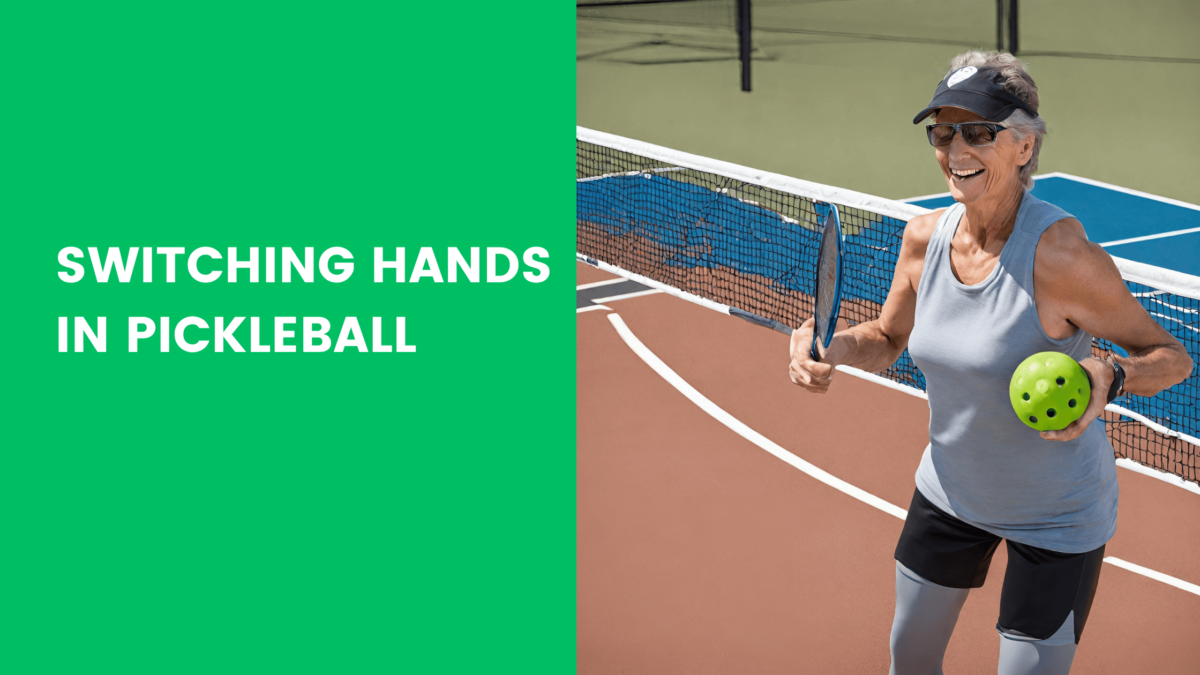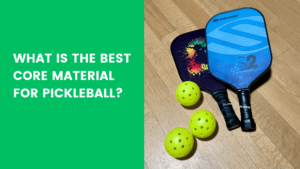Pickleball, a popular paddle sport, combines elements of tennis, badminton, and ping-pong. It’s played on a smaller court with a lower net, making it accessible to people of all ages and skill levels. While pickleball may seem straightforward at first glance, mastering certain techniques can significantly elevate one’s gameplay. One such technique is switching hands in Pickleball, a skill that allows players to adapt to various shot angles and maintain control during rallies.
Understanding the Importance of Switching Hands
Enhancing Flexibility
One of the primary reasons for switching hands in pickleball is to enhance flexibility on the court. As the game evolves, players encounter situations where their dominant hand may not provide the ideal angle or reach for a particular shot. By developing the ability to switch hands seamlessly, players can expand their shot selection and adapt to varying game scenarios.
Gaining Strategic Advantage
Switching hands also offers players a strategic advantage by keeping opponents guessing. By demonstrating proficiency with both hands, players can create uncertainty in their opponent’s mind, making it challenging for them to anticipate the direction of the next shot. This unpredictability can disrupt the opponent’s rhythm and give the switching player a competitive edge.
Related posts : 4 Pickleball Wall Drills to BOOST Your Game FAST
Proper Technique for Switching Hands
Grip Adjustment
Before attempting to switch hands, it’s crucial to adjust the grip on the paddle accordingly. For right-handed players, transitioning to the left hand requires loosening the grip and rotating the paddle slightly counterclockwise. Conversely, left-handed players should adjust their grip to accommodate the right hand smoothly. Maintaining a relaxed grip ensures better control and maneuverability during the switch.
Footwork Considerations
In addition to grip adjustment, proper footwork is essential for executing a successful hand switch. Players should position their feet parallel to the baseline, slightly wider than shoulder-width apart, to maintain balance and stability. When switching hands, pivot on the balls of the feet while maintaining a low center of gravity to facilitate smooth transitions without losing momentum.
When to Switch Hands During a Game
Assessing Opponent’s Position
Knowing when to switch hands depends on various factors, including the opponent’s position on the court. If the opponent is out of position or struggling to reach a shot, it may present an opportune moment to switch hands and exploit their vulnerability. Similarly, if the opponent’s shot places the player in an awkward position, switching hands can help regain control and counter effectively.
Recognizing Advantageous Moments
Players should also be mindful of advantageous moments that arise during rallies, such as hitting a shot that forces the opponent to stretch or retreat from the net. These moments create openings where switching hands can produce unexpected angles or placements, catching the opponent off guard and seizing control of the point.
Common Mistakes to Avoid
Overcommitting to a Shot
One common mistake when switching hands is overcommitting to a shot without assessing its feasibility. Rushing the switch or attempting overly ambitious shots can result in errors and compromise the player’s positioning on the court. It’s essential to remain patient and selective when choosing to switch hands, prioritizing accuracy and control over power.
Losing Balance During the Switch
Another pitfall to avoid is losing balance during the hand switch, which can lead to awkward positioning and vulnerability to counterattacks. To prevent this, focus on maintaining a stable stance and fluid motion throughout the transition. Practicing footwork drills and honing proprioception can help improve balance and coordination when switching hands under pressure.
Tips for Practicing Hand Switching
Solo Drills
Solo drills are an effective way to develop hand-switching skills and improve overall dexterity. Set up targets on the court and practice hitting shots with both hands, focusing on accuracy and consistency. Incorporate movement patterns and footwork into the drills to simulate game-like scenarios and reinforce muscle memory.
Partner Drills
Partner drills provide an opportunity to practice hand switching in a dynamic, interactive setting. Work with a partner to simulate rallies and exchange shots from various positions on the court. Experiment with different shot angles and placements, challenging each other to anticipate and react to hand switches effectively. Incorporate feedback and constructive criticism to refine technique and strategy.
Conclusion
Mastering the art of switching hands in pickleball is essential for players looking to elevate their game to the next level. By understanding the importance of hand switching, developing proper technique, and practicing diligently, players can enhance their flexibility, gain a strategic advantage, and ultimately improve their performance on the court.
Unique FAQs
- Is it necessary to switch hands in pickleball?
- While it’s not always necessary, being able to switch hands can provide players with more options and versatility during a game, especially in challenging situations.
- Can beginners learn to switch hands in pickleball?
- Yes, beginners can learn to switch hands with practice and patience. Start with basic drills and gradually progress to more advanced techniques as proficiency improves.
- How do I know if I should switch hands during a rally?
- Pay attention to the positioning of your opponent and the trajectory of the ball. If switching hands allows you to hit a better shot or exploit a weakness in your opponent’s defense, it may be a good time to switch.
- Are there any specific drills to improve hand switching?
- Yes, there are several drills designed to improve hand switching, including solo drills focusing on accuracy and partner drills simulating game-like scenarios. Consistent practice is key to improvement.
- What should I do if I struggle with balance while switching hands?
- Focus on maintaining a stable stance and fluid motion during the hand switch. Practice footwork drills to improve balance and coordination, and seek feedback from coaches or more experienced players for additional guidance.






Pingback: How to Hit a Third Shot Drop Pickleball - All about pickleball